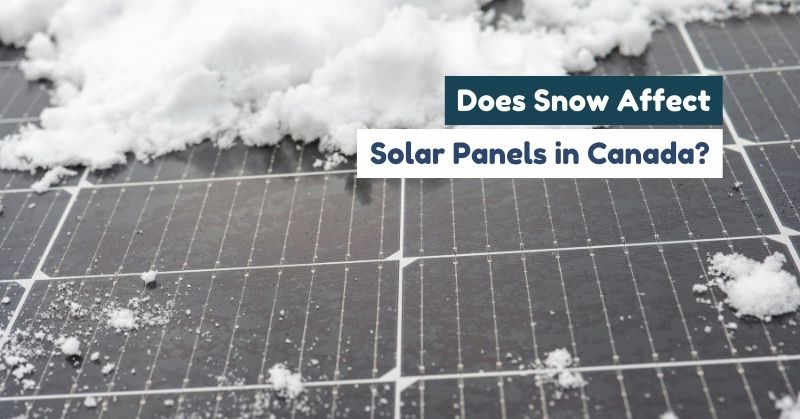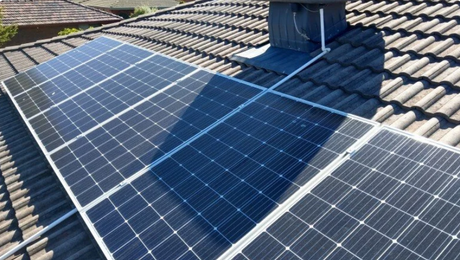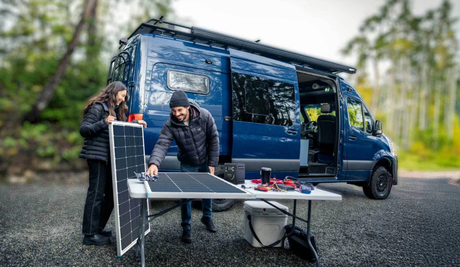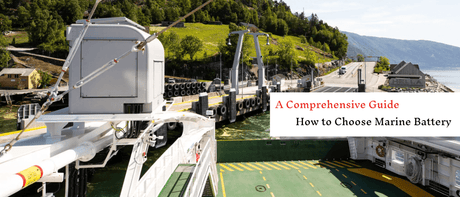You can buy and install solar panels on your roof for a consistent and reliable power supply, as it receives a lot of sunlight. Home solar power systems significantly reduce your electricity bills, as they reduce your dependence on the utility grid.
Summer is the perfect time to get the maximum out of your solar systems, as PV cells receive direct sunlight for many hours throughout the day. Electricity production is reduced in winter, as the intensity of the sunlight reduces significantly.
However, getting an electricity supply from your home solar system becomes a huge concern during the winter in Canada. A major portion of the country remains covered for over six months of the year. Therefore, it is often known as a snowy country.
Snow on solar panels causes them to experience the blocked sunlight. Therefore, more maintenance effort is required, which is another challenge for most residents. Let's get into further specifics of this subject.
Do solar panels work in winter?
If you are searching for a quick answer to this question, it is a big YES. Solar panels can generate power during the winter. In fact, winter is more feasible for PV panels to reach their full potential and produce power more efficiently. Isn't it amazing?
Solar panels don't work in winter. It is a common myth that needs to be addressed with facts. The solar panel output is improved in cold climates, and it produces more electricity for each hour of sunshine. Though days are shorter in winter, each shiny hour contributes to effective power generation.
Since PV panels capture sunlight and turn it into electrical power, they don't have anything to do with the air temperature or the temperature in the surroundings. As long as sunlight is falling on your panels, they will continue to generate electrical power.

Solar panel's performance in winter vs. extreme heat
As stated earlier, colder temperatures enhance the ability of PV panels to produce more power efficiently. The reason behind this fact is that the temperature of solar panels does not increase above the threshold value in winter and they don't overheat, resulting in better and seamless electricity generation. Remember, shorter daylight hours reduce the overall power production of PV panels during winter.
In contrast, summer helps panels receive sunlight for long hours throughout the day. At the same time, extreme heat during summer increases the temperature of the PV panels, causing them not to reach their full potential and generate the maximum energy they are supposed to. The output power of panels degrades when their temperature rises above 77 degrees Fahrenheit or 25 degrees Celsius.
The behavior of solar panels is similar to your mobile device left out in extreme heat or direct exposure to sunlight for hours. The mobile's performance slows down in the heat, or it even powers off.
But, how does snow affect solar panels?
Many people worldwide, especially those who live in Canada, are often concerned about solar panels and snow. Are you also worried about whether or not solar panels covered in snow function properly? Well, snow does not usually directly affect solar panel structures, but it does affect electricity generation.
PV cells receive sunlight to generate power, but when snow covers the panel's surface, they don't receive proper sunlight as they do when the weather is not snowy. It leads to lower energy production during winter. The impact of snow on solar panels depends on the installation angles and the amount of snow covering their surface.
If you live in an area where frequent snowfall is normal, snow may stay on your panels and keep them covered for a long time. As a result, your solar power kit or system will not be able to generate enough power to meet your energy needs. It will cost you more in terms of electricity as your dependence on the utility grid will increase.
A small amount of snow on your panel may not have a significant impact on power production. It is usually cleared or removed naturally, depending on the installation angle.

Can snow damage solar panels?
As mentioned earlier, a small amount of snow does not really put significant weight on panels, so this is not an issue. In contrast, heavy snowfall can be a matter of concern for solar system owners, as the extra weight of snow puts added stress on the structure.
Other major risks of snow on PV panels include the formation of ice, structural stress, potential for panel damage, and uneven weight distribution. Advanced PV panels, like Longi Himo 7, Canadian Solar TOPBiHiKu 7, and Qcells Q.Peak Duo Blk ML-G10+, can bear a good amount of force (up to 5,400-8,100 pascals) exerted by the snow on panels.
Snow is no more a risk for PV panels
Considering the advancements in technology, snow is now not a big issue for solar systems. Setting the proper angle at the time of installation can eliminate many potential issues (if not all). A steeper tilt angle is always recommended to protect your solar panels from snow during winter. A 50-degree angle will help the panels clear the snow automatically.
Snow needs extra attention for stand-alone and off-grid systems. In the case of modern solar systems, you can use a soft brush to remove the snow from the panel's surface. Don't forget to prioritize your personal safety.
Buying advanced panels, like Renogy solar panels, significantly reduces the risk of damage from snow. However, ice dams, ice buildup, and severe snow can create potential risks for panels and their internal components.
How to keep snow off solar panels?
Cleaning your panels maintains efficiency, maximizes the energy output, ensures safety, prevents damage, and offers long-term cost savings. Let's now look at the valuable tips for clearing snow on solar panels.
- Adjust a steeper angle: If you want snow to slide off automatically from your solar panels, adjust the angle between 45 and 60 degrees.
- Apply anti-stick sprays: Using anti-stick sprays develops a slippery surface on the panels and does not allow snow to accumulate.
- Remove light snow regularly: Use a roof rake to brush off light snow from your panels. Alternatively, you can use a soft brush. Removing light snow is very easy. It helps you prevent the accumulation of heavy snow.
- Clear heavy snow carefully: If heavy snow has covered your panels, use a squeegee or a plastic scraper to remove it. Avoid applying too much pressure and using metallic tools, as they may damage the panels.
- Install heaters: These heaters are specifically designed for melting snow on solar panels. If you live in an area with heavy snowfall, installing these heaters will be worth it.
Methods to remove snow from your panels
Common snow removal methods are as follows.
- Manual removal: It involves the use of a soft foam-headed snow broom or roof rake to clean the panels.
- Snow guards: These guards help large snow sheets slide automatically off the panels.
Other methods include hydrophobic coatings, heated panels, and getting professional assistance if there is a risk of hazards. The ideal installation angle that prevents snow buildup is between 45 and 60 degrees, as mentioned earlier.

Best tools for brushing off snow from panels
The tools you can use to remove snow on PV panels without damaging them are:
- Soft bristle brush
- Plastic snow scraper
- Hair dryer
- Snow rake
Melting snow for solar panel clearing
Currently, some technologies have been introduced to melt snow and remove it from the solar panels, including built-in heating systems, heating cables, heat tape, and more. These technologies use some electric power to heat up the panels for snow removal. One issue these technologies can create is that when snow is melted, water will fall on the roof and will re-freeze.
Remember, melting snow and removing it from your solar panels with no human interaction is possible, but it is not a cost-effective solution, as you need to buy additional equipment, install it, and then maintain it. The cost you need to implement these solutions is more than the electricity production loss you experience due to solar panels covered in snow.
If your solar system is installed in a place where no one can remove the snow when needed, you can use these autonomous solutions only in this case. Otherwise, you can simply adjust a steeper angle and manually clear the snow regularly.

Conclusion
In cold countries like Canada, winter is always freezing, which is why people are concerned about whether snow on panels will allow them to function properly. Well, you might be surprised to know that solar panels perform more efficiently in winter than in summer. The potential reason behind this fact is that they don't get overheated in winter.
However, short sunny days in winter reduce overall energy production. Though snow covers the panel's surface and blocks sunlight, it does not cause any permanent damage to the panels. If you keep removing the snow on PV panels regularly and keep them well maintained with the right maintenance strategies, you will be able to get the maximum out of your solar system during winter.
Frequently asked questions
Should you clear snow off solar panels?
Yes, you should remove snow from your solar panels to help them absorb more sunlight and produce electricity efficiently. If you have installed self-heated solar panels with an ideal angled design, you may not need to clear snow manually.
How do you defrost solar panels?
The simplest method of defrosting solar panels is to wait for natural sunlight to melt the snow on them. If the sun is not shining brightly for a couple of days and snow has started accumulating on the solar panels, you can use a soft-bristled brush to brush off the snow on priority.
At what temperature do solar panels stop working?
Generally, solar panels don't completely stop working at a particular temperature value. However, a significant drop in performance can be observed at a very high temperature. If the temperature rises above 185 degrees Fahrenheit, most solar panels experience a noticeable drop in performance. Simply put, the power output of PV panels is significantly reduced in extremely hot conditions.









